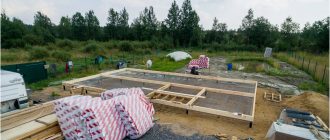Porcelain tile is a stone-porcelain tile, which is characterized by high performance characteristics and is very popular in construction. Cold-resistant porcelain stoneware is used for cladding facades, manufacturing steps and for other purposes. The choice and installation of the material require knowledge of its varieties and their differences from each other, the nuances of working with them.

Types of porcelain tiles
This material appeared on the market relatively recently, but already managed to gain great popularity among buyers. The use of frost-resistant porcelain tiles of Italian and Spanish production is considered a sign of good taste and well-being. The material itself appeared as an alternative to natural stone, but modern tile models can imitate various surface variants. The following main types of ceramic granite are distinguished:
- technical – durable and reliable, but not distinguished by a special attractive appearance. Technical tile is relatively inexpensive and is used for cladding industrial premises and technical areas;

- Matt – is characterized by unglazed surface. The use of matte porcelain stoneware for the street is advantageous in that this type of material has a high level of durability, but regular maintenance is necessary for such tiles, since traces easily remain on its surface;
- polished – has a characteristic mirror shine, most often used for cladding facades and other vertical surfaces. It is not recommended to use polished tiles for facing the floor or steps, as over time the coating is erased and the tile becomes matte;
- glazed – the surface of this variety of porcelain stoneware is covered with a special glaze, which gives it a unique shine. Such porcelain stoneware tiles for the street can be stylized for different materials, have a different color and pattern. It is better to use it for finishing walls and other surfaces that will not be subjected to heavy loads;
- satined – porcelain stoneware, on the surface of which a layer of mineral salt is applied. After firing, this tile boasts a velvety surface structure. Used for decorative purposes;
- structured – another decorative variety, which may look like products made of natural stone, wood, leather and other materials.
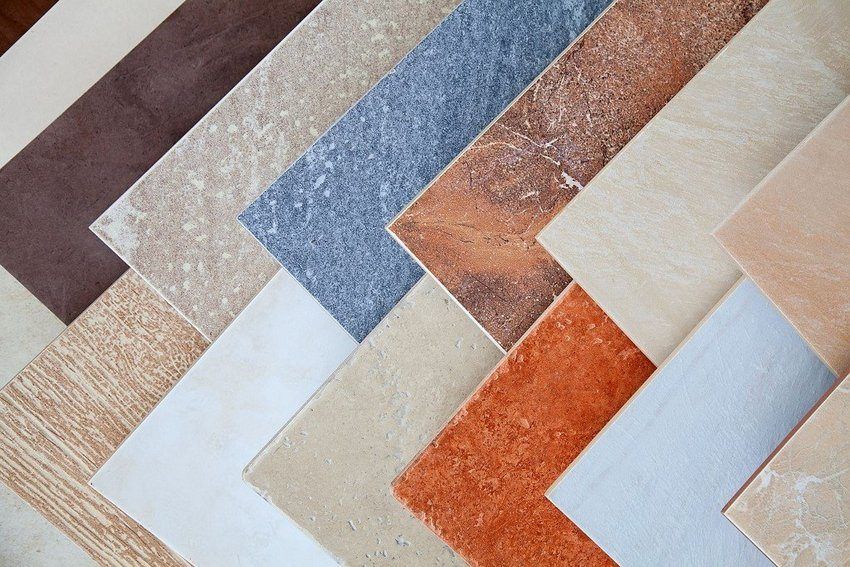
Each of the types of tiles has its own advantages and disadvantages, and it is worth choosing according to your needs and features of the material exploitation.
Helpful advice! One of the main criteria for the selection of porcelain stoneware for outdoor stone is the maximum load on the material. Therefore, first of all, you need to build on this parameter, and after that take into account the remaining characteristics.
One of the main advantages of porcelain tiles over other facing materials is its increased density and strength. It is far superior in performance to conventional ceramic tiles and has the following features:
- frost resistance – the ability to easily tolerate low temperatures is one of the main advantages of frost-resistant porcelain stoneware for the street. It is possible to buy such a material for use at temperatures up to -50 ° C, so it is advantageous to use it for use in open space. In addition, this material withstands temperature extremes;

- resistance to wear – the tile is well resistant to scratches, chips and other mechanical damage, which allows it to be used with equal efficiency for finishing steps, porch, the floor in the house and other surfaces that are often subjected to high mechanical loads. The service life of anti-slip frost-resistant street ceramic granite is approximately 7 years and more;
- low moisture absorption – porcelain stoneware tile does not absorb moisture at all, so it can be safely used at any humidity indicators;
- impact resistance – on a surface lined with ceramic granite tiles, you can drop a heavy object without fear that the coating will be damaged. Moreover, the thicker the tile, the greater its resistance to impacts, therefore, the indicators of the thickness of porcelain stoneware for a porch on the street should be quite high.
All these advantages make porcelain tiles an excellent option for use as a facing material for a wide variety of surfaces. He is not afraid of frost and heat, tolerates heavy loads and can serve you for many years without losing the attractiveness of appearance.
When choosing a material you need to pay attention to a number of important points. One of the primary ones is a tile manufacturer. It is on the manufacturer that the level of quality depends, that is why it is Italian models that give preference. They are more expensive than domestic porcelain tiles, but also have higher performance characteristics.
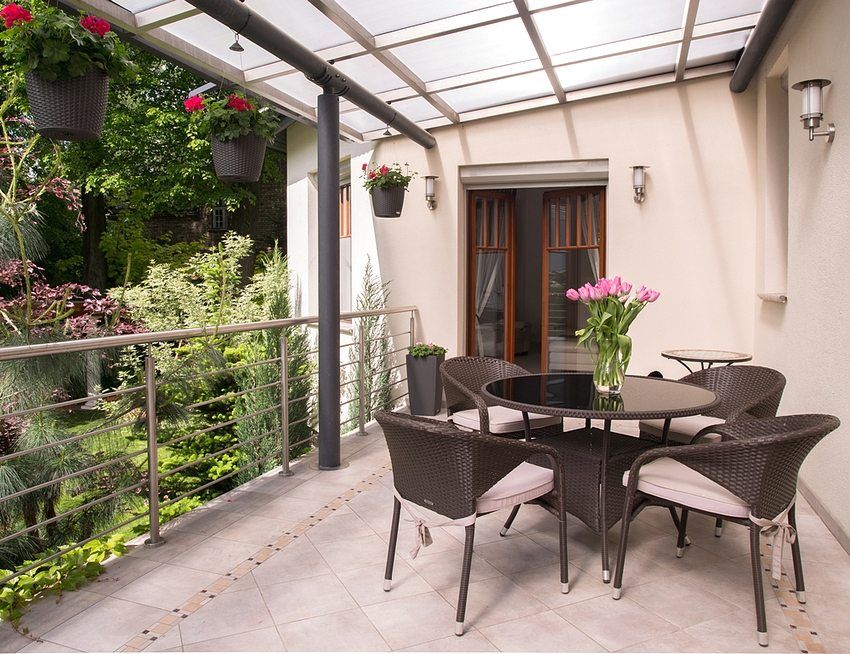
The second most important parameter of the tile is the presence of a non-slip surface. Buying anti-skid porcelain stoneware for the street will provide you with safety, since using a slippery surface you can easily get hurt. High-quality tiles must be roughened to reduce the risk of injury even when wet. In addition, too smooth tiles will often have to be sprinkled with sand and other anti-slip materials, which can lead to a rapid loss of the attractiveness of its appearance.
The use of anti-slip frost-resistant porcelain stoneware for street antislip is more profitable than the use of corrugated surfaces. The latter do not slide as smoothly as they are, but they are much more difficult to remove dirt and quickly wear out, they acquire an unattractive appearance. There are several types of non-slip frost-resistant porcelain stoneware according to the durability parameter:
- PEI I, II – low durability, it is recommended to apply to the facing of vertical surfaces or the floor, which is not expected to be a large load;
- PEI III – the average level of durability, it is best to use in residential areas with the movement of low intensity;
- PEI IV – good wear resistance, can be used in public buildings;
- PEI V – the maximum level of stability.
The choice of the appearance of anti-slip frost-resistant porcelain stoneware for the street, as well as the size of the tile depends solely on your taste. The price per m2 of porcelain tile for a facade or for steps depends on the manufacturer and can vary over a very wide range. For example, for domestic manufacturers it could be 700-800 rubles. for the quarter. m, and for foreign – 1000-1500 rubles.

In addition, when choosing, it is necessary to take into account a number of additional material parameters. These include, for example, caliber – the difference between the size indicated on the package with the material and its actual dimensions. This difference can be up to 0.5 mm and is of great importance when facing the floor or walls.
Check the level of quality tiles can be quite simple. To do this, assess its weight. For example, a tile of frost-resistant porcelain stoneware for a street of 30×30 cm and a thickness of 8-9 mm should weigh about 2 kg. If the weight of the material is less, it means that the manufacturer has saved on quality and this tile will quickly fail.
Ceramic granite tiles with stylized natural stone are the most popular, so it is very important to know how to choose this particular type of material. There are options stylized as granite, marble, onyx, sandstone, jasper, basalt and many other types of stones. They are widely used for the manufacture of steps for stairs made of porcelain, facades and other purposes.
The most common are the two options for imitation of natural stone. This is an exact imitation and artistic decoration. The first option is exactly the same pattern and texture of natural mineral, and the second is characterized by the presence of decorative additives. These include gold veins, stylized rock painting and so on. In the catalog of porcelain stoneware Kerama Marazzi, for example, you can find many similar options.

Natural marble and travertine are among the most popular materials for imitation. Imitation of the latter is very difficult to distinguish from the original, even for a specialist, since the tile completely repeats the color and texture of the material. With artificial marble, everything is somewhat more complicated, it is very similar to natural, but does not have the depth of black color, which is characterized by natural stone. At the same time, a large tile looks better, for example, laying marble steps from porcelain stoneware for the street using a tile of 1200×600 mm will look better than 600×600.
The laying of porcelain tiles on technology differs from the installation of conventional ceramic tiles. When laying ceramic granite on the street, you should not use cement-based construction mixtures, but rather use special glue. If we are talking about finishing the facade, the method of laying can be two:
- Laying on a special glue.
- Fastening with brackets or screws.
The choice of method of fastening material depends on many factors. These include climatic conditions, type of structure and other parameters. Each of the above methods has its own nuances.

As already mentioned, it is impossible to use ordinary cement-based building mixtures for the finishing of surfaces with porcelain stoneware. Especially for fixing this material there are many types of specialized glue. When choosing glue for laying porcelain stoneware on the street or indoors, you need to pay attention to its following characteristics:
- Glue must necessarily create a strong layer between the sheets of material and the surface. In addition, it must withstand a large load.
- The adhesive mixture must have a high level of moisture resistance, otherwise the coating may be deformed by moisture and temperature changes.
- If laying of such material as porcelain stoneware is planned on the street, the glue for this should be distinguished by good resistance to high temperatures.
- The frost resistance of the glue should also be at a high level if it comes to laying in the domestic climate.
- Elasticity is another important property of glue for porcelain.
Helpful advice! As a rule, for each of the types of premises, as well as for the internal and external decoration need different brands of building adhesive. Of course, there are universal options, but they will cost you much more.
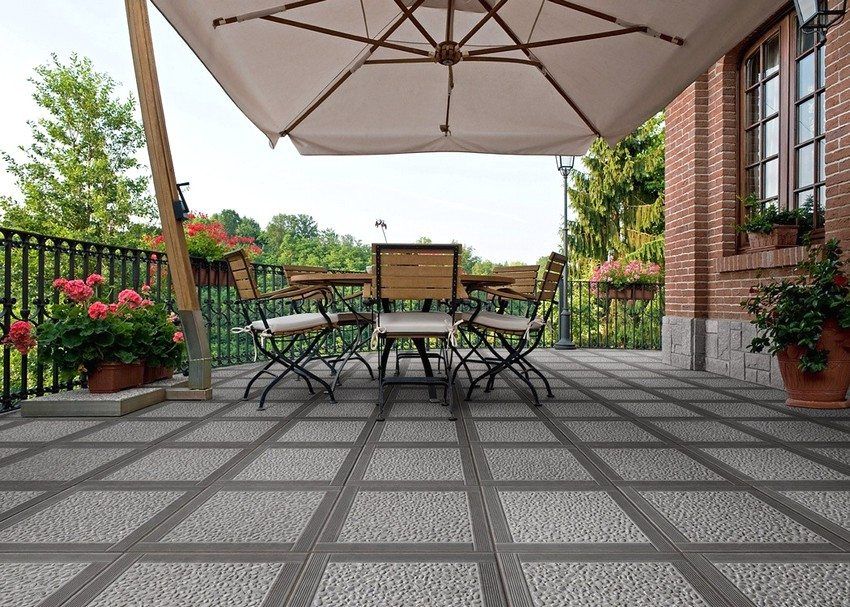
All types of adhesives for porcelain tiles can be divided into three categories:
- single component;
- two-component;
- blends using a plasticizer.
The peculiarity of one-component cold-resistant glue for porcelain stoneware is that you can work with it immediately after purchase. It is characterized by a high level of elasticity, as well as a long hardening time. Thanks to the latest quality, you can immediately glue a large number of tiles without fear that the glue will harden.
Two-component mixtures are called so due to the fact that when you buy, you get two components of the adhesive mixture. Immediately before applying to the surface, the components must be mixed using a special mixer. Two-component adhesive hardens faster, but also has greater strength and elasticity.
Plasticizers in the adhesive mixture contribute to increasing its elasticity and prolong its service life. If you need high-quality glue for finishing the facade with porcelain stoneware, cement mixture with plasticizers is your option.

Different adhesive mixtures are suitable for use in different conditions. For example, for finishing walls and floors in rooms with a high level of humidity, it is better to choose a moisture-resistant composition, and for rooms with high intensity of movement – a composition with high strength characteristics. This will prevent shrinkage and extend the life of the coating.
But when using the technology of laying porcelain stoneware on the street, it is better to use cold-resistant and heat-resistant mixtures that tolerate exposure to moisture and direct sunlight. If you do not want the steps, walkway or façade with porcelain stoneware to be cracked after a couple of months of operation, it is better to use glue with enhanced strength and elasticity.
Note also that the larger the tile size, the greater the amount of glue that must be used to fasten it. Based on the tile size, the thickness of the adhesive layer is also calculated. By the way, the parameters of the spatula, which is used for applying glue, depend on the assumed thickness of the interlayer. The thicker the layer, the larger the trowel.

Facing the facade of the building with porcelain tiles gives you a number of advantages:
- attractive appearance – there are many options for the appearance of porcelain tiles, so when finishing you can use your designer imagination at full capacity. And, for example, when creating a curtain wall made of porcelain stoneware for office construction, you get a respectable building that will tell all visitors about the solidity of your company;
- protection against moisture – when creating a ventilated facade made of ceramic granite, natural ventilation is obtained. Due to this, mold or disease-causing bacteria do not accumulate in the building’s walls, and they do not freeze during the cold season. All this contributes to a significant extension of the service life of the structure;
- thermal insulation – ventilated facade reduces heat loss of the entire building. This means that in the warm season they will not overheat, and in the cold air gap will reduce heat loss and, consequently, the cost of heating the room;
- durability – if you plan to buy frost-resistant porcelain stoneware for the street made in Russia, you should know that this material is characterized by durability, strength, resistance to temperature extremes, and does not require special care during operation. The price of frost-resistant porcelain tile for the street of 600×600 cm will be higher than that of other finishing materials of the same size, but this is offset by high performance;

- high level of noise insulation – in combination with the air gap of the porcelain tile slab perfectly protect the room from external noise;
- fire resistance – porcelain stoneware is a non-combustible material. This class also includes other elements of the ventilated facade;
- ease of installation – the material is easy to install, and it can be done at any time of the year, regardless of weather conditions. At the same time laying of porcelain tiles is made quickly enough;
- the ability to mask the irregularities of the walls without the need for additional plastering work.
With a relatively high price of ventilated facade of porcelain tile per m2, you get a large number of advantages that finishing with other building materials will not be able to give. Any facade consists of the following elements:
- bearing wall – acts as a support for the structure;
- sub-wall – serves as an intermediate structure between the bearing wall, the insulating layer and the plates of the finishing material. Consists of brackets that are attached to the wall with dowels and anchors, bearing profiles and special fasteners;

- heat and sound insulation layer – protects the walls from temperature extremes, possible thermal deformation, as well as the room from external noise;
- vapor barrier layer – a special film that does not allow condensate to settle on the walls and contributes to its evaporation;
- air gap – the gap between the insulation and the plates of the cladding material. Serves to drain moisture;
- porcelain stoneware plates – protect all previous layers from negative natural impacts, and also perform a decorative function.
Helpful advice! There are several options for mounting the frame system to the load-bearing wall. Choose from them the one that best suits your specific conditions.
The most popular way of attaching porcelain to the frame system is a combination. This means that the frame is mounted simultaneously from horizontal and vertical guides. In this case, you can first install either horizontal or vertical. The first method allows you to evenly distribute the load, but is quite expensive, and therefore is not used very often.
The way in which vertical guides are first mounted is effective when using thick plates of ceramic granite and allows not only to reduce the load on the structure, but also to hide the method of fastening.

The type of seams between the plates of the finishing material may also differ. The visible seam is the easiest option and involves fixing the plates with screws, screws or rivets through special seals. Laying without seams involves the use of flush mounting. There are several options:
- Mechanical – with this method, a hole for the dowel is drilled from the back of the plate. Usually for mechanical fastening material plates with already prepared holes are used.
- With the help of glue – the material is glued to the vertical profile. This method allows to reduce the installation time, but it is impossible to dismantle a plate that has already been glued (for example, for replacement).
- Combined fastening – is the same as mechanical, but only at two points and with the use of glue. With this method, the larger the size of the plate, the greater the cost of installation.
- With the help of pins – mounting holes are drilled in the horizontal ends, into which special pins are inserted. The pins are attached to special adjustable brackets that are attached to the load-bearing wall. This option eliminates the use of horizontal or vertical guides.
The use of any of the above mounting methods takes relatively little time, and also allows you to create a high-quality and beautiful facade that does not require additional care.
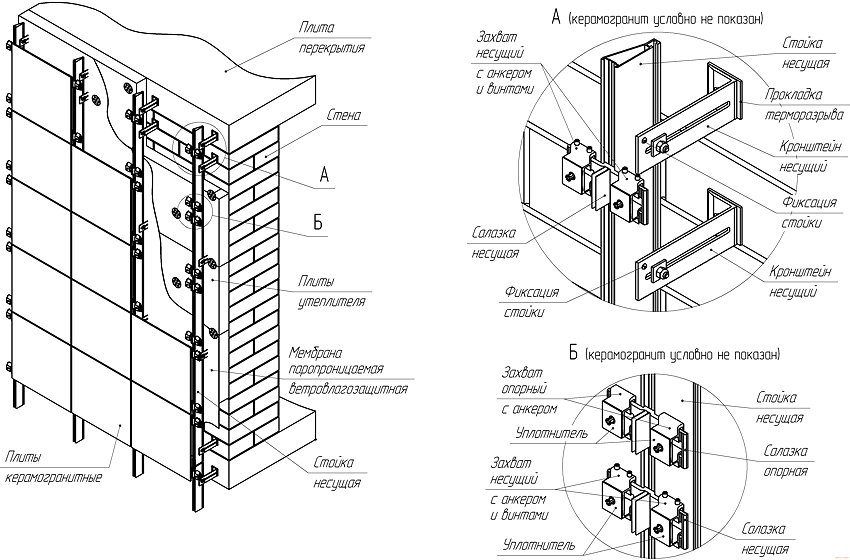
For the manufacture of steps of porcelain, you need to understand that the whole structure must have a number of qualities. First, it must be safe. To do this, the optimum height of the steps should be about 15-20 cm, and width – 25-30 cm. Secondly, when making the steps for the porch of porcelain stoneware, you need to take into account that the material will often be exposed to moisture, therefore should not slip. Thirdly, the appearance and design of the steps should be in harmony with the appearance of the entire building.
According to the type of material laying, the following options are distinguished:
- Monolithic – solid slabs, each of which is a step. The traditional size of such steps from porcelain stoneware is 1200×300 mm. Monolithic steps are characterized by increased strength and attractive appearance, although they are expensive.
- Prefabricated – made from several plates of medium size. The installation of such steps can be sutured or seamless. For grouting the stitches of porcelain stoneware on the street, an ordinary spatula is used, and the joint can perform a decorative function.
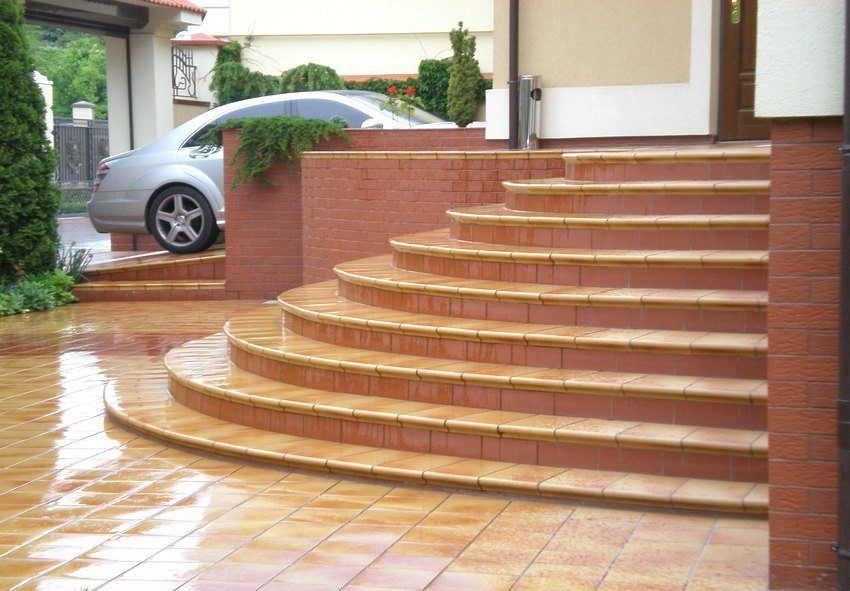
In addition, according to the method of processing, there are also several types of porcelain stoneware steps. You can buy the following options:
- polished steps – have a high level of specular surface, which is 80%;
- non-polished – the specularity is 25%, usually used on the street;
- ground – are good because they do not slip from moisture due to the matte surface, they are characterized by a high coefficient of friction;
- glazed – combine a high level of specularity and non-slip surface. Equally effectively used indoors and in open space.
Helpful advice! Glazed plates are better suited for use in rooms with a low level of terrain. For stairs and other places where heavy traffic and heavy loads are expected, it is better to use a matte or polished version.

When laying steps of porcelain tile 1200×300 with a capinos or other versions of steps, approximately the same procedure is performed:
- The surface of the main steps is covered with an acrylic primer, which improves the adhesion between the facing material and the staircase itself. The irregularities of the steps are leveled with putty.
- If necessary, the plates of the finishing material are cut. You can cut porcelain at home using various tools.
- Prepared and then applied to the stage adhesive solution. Application is carried out using a notched trowel.
- Stacked slab material. It is better to start laying from the top steps. First, horizontal and then vertical elements are laid.
- The corners of the steps are processed using a plastic or metal angle.
- The seams between the plates are filled with grout and cleaned.
The price of porcelain steps for stairs depends on the type, size and other characteristics of the material. For example, the price of Estima porcelain stoneware can vary from about 300 to 800 rubles. for the quarter. m
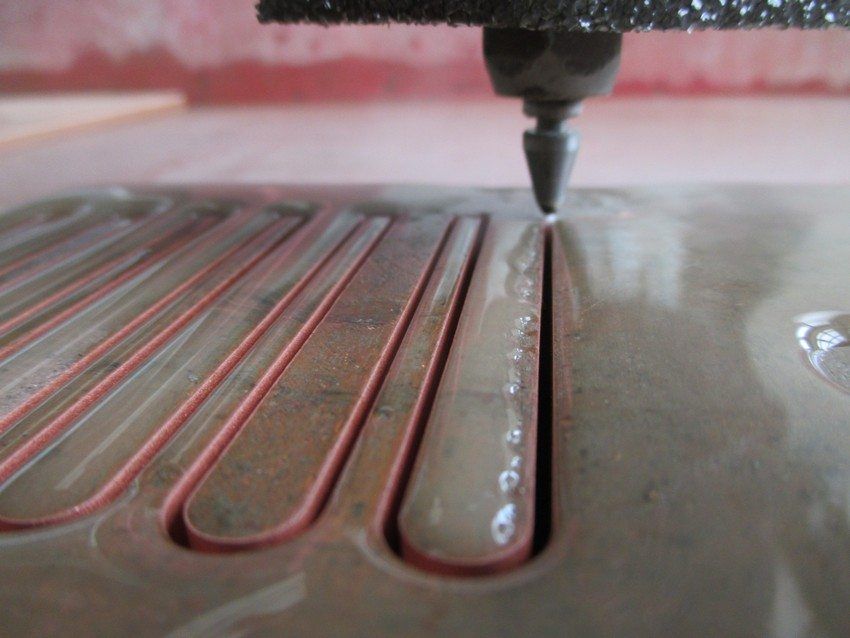
Often when installing porcelain stoneware material must be cut. This can be done in various ways. For example, you can use a special machine for cutting porcelain. It can be electric or manual and allows you to carefully cut hard material. The machine uses special discs for cutting porcelain stoneware with a diamond coating.
It should be understood that with the help of the machine it is convenient to cut the plates into large parts, but to cut curly products you will need laser or water-jet cutting. The first method is carried out using special industrial lasers, and the second is a jet of water with abrasive materials. Waterjet cutting is cheaper than laser cutting, but at the same time allows you to get a good result.
To use waterjet cutting, you will also need a special machine, but with it you can get fine ornaments or exquisite patterns of porcelain tiles.
No wonder that porcelain tile is one of the most demanded finishing materials in the modern market. It boasts high performance, a variety of design options and ease of installation. Choosing the finish porcelain, you choose quality, reliability and attractive appearance.

